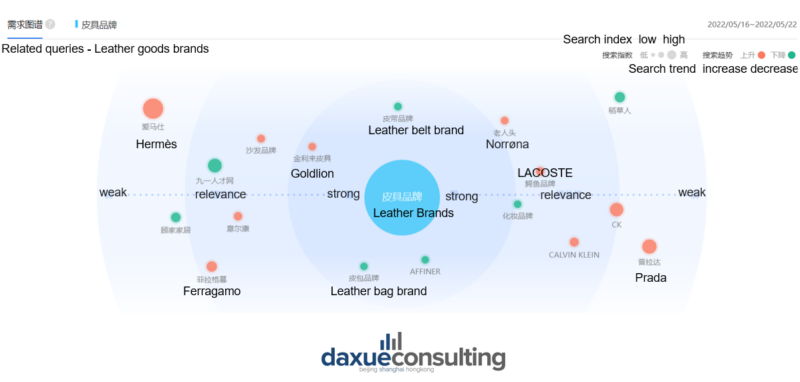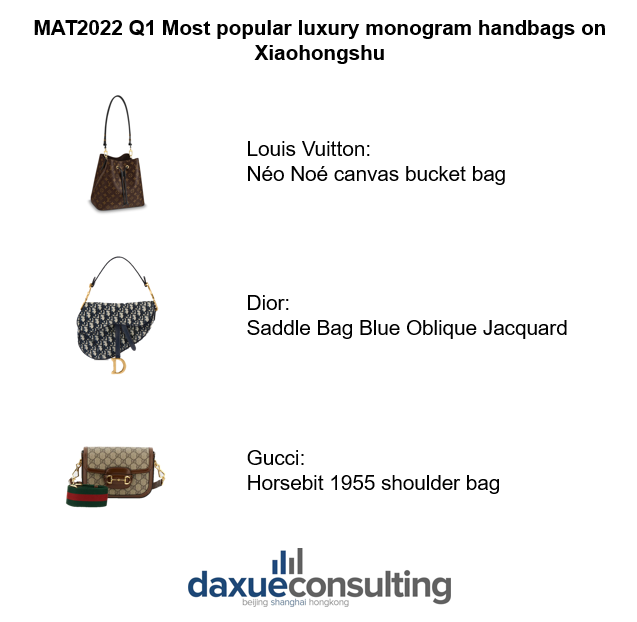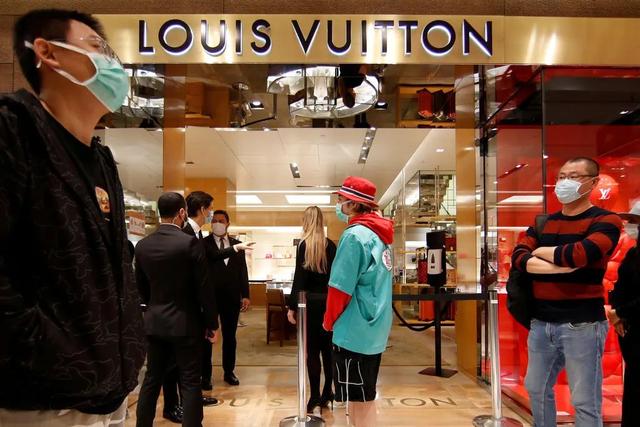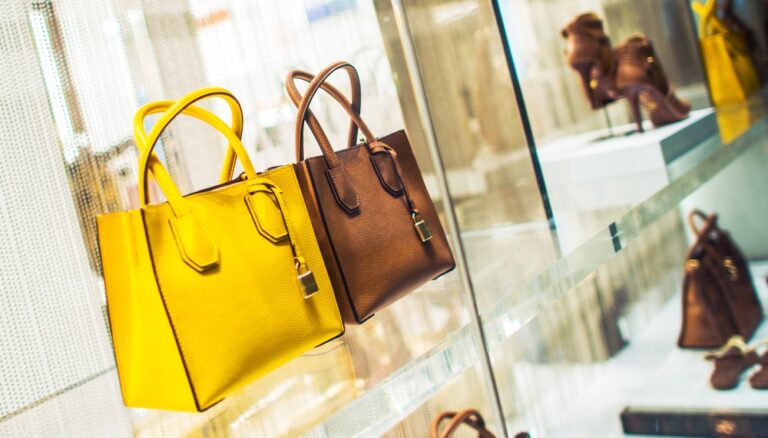Chinese consumers were reported to spend 741 billion RMB on luxury goods in 2021, recording an increase of 36% compared to the previous year. Despite the impact of Covid-19, China’s luxury market has witnessed continuous growth. According to Bain & Company, China’s luxury market accounted for 21% of the global market in 2021, and it is expected to become the world’s largest luxury market in 2025. Among all luxury categories, luxury leather goods grew the fastest, boasting a growth rate of 60%, followed by apparel and jewelry.
Luxury leather products can be both affordable luxury and heavy luxury goods. Most affordable luxury leather brands were born in the US after World War II. They are high-quality and positioned as premium but with consumer-friendly prices. Coach, Furla, and Kate Spade are some brands falling under this category. In contrast, heavy luxury leather goods refer to those high-end fashion brands vaunting a long history, such as Louis Vuitton and Chanel. Unlike heavy luxury leather names, which can rely on their long and well-established brand heritage, affordable luxury leather brands are demand-driven and commercialized through an accurate market positioning.

Meanwhile, driven by increased consumption of luxury leather goods in China, in 2016, the import value of finished leather products surpassed leather raw materials for the first time, according to STYLE Magazine. As global activists are concerned about environmental issues and animal rights against Chinese consumers’ growing demands for fur and luxury leather made from animal materials, many luxury brands have begun to look for alternatives from synthetic materials and plants.
Chinese female consumers are more trend-oriented when purchasing luxury leather goods
According to DJ Yanbao’s 2022 report, male and female consumers have different purchasing habits for luxury leather products. Male consumers usually do not have a clear preference, and they mainly care about basic pieces of information such as product functionality, design, and reputation instead of following new trends. They prefer luxury leather accessories over leather bags. In contrast, Chinese female luxury consumers are more sensitive to the latest trends. They pay special attention to the popular handbags and are concerned about brands as well as about matching their outfits. Female luxury consumers tend to spend more in bags than in leather accessories and shoes.
What are the main segments of the luxury leather market in China?
Luxury leather handbags
Chinese consumers love luxury leather handbags. iResearch’s report shows that, in 2020, 31.2% of surveyed Chinese Generation Z consumers purchased luxury bags once a year, and over 29% purchased them at least twice a year. Among all luxury brands, leading international names held 33% of the total Chinese luxury leather market in 2021. Such brands play an essential role in the luxury leather industry and are trendsetters.
Meanwhile, second-hand and vintage luxury handbags are becoming more and more popular in China. In 2022 Q1, 91% of second-hand and vintage-related search results on Xiaohongshu are luxury bags. Second-hand and vintage bags with classic designs from Louis Vuitton, Chanel, and Coach were the most successful among Chinese female consumers in 2022. More specifically, NEO NOE bucket bag from Louis Vuitton, Dior’s SADDLE Bag Oblique Jacquard, and Gucci’s Horsebit 1955 mini bag were the most popular monogram bags on Xiaohongshu during 2022 Q1.

On the other hand, as people’s income and social events experienced a significant decrease due to the pandemic, Chinese consumers tend to purchase classic or high-quality and long-term value-preserving handbags rather than new products. Thus, the competition among luxury giants has become fiercer. Louis Vuitton faces challenges in maintaining its leading market position, whereas brands like Burberry are preparing for a strategic revolution with the renewal of their supply chain.
Luxury leather shoes
Luxury leather shoes have never suffered a loss in popularity in China so far. In 2021, luxury the sales revenue of luxury shoes reached 165.3 billion RMB, boasting an 11% growth rate compared to 2019. Luxury sneakers and leather boots are the main drivers of purchase in the luxury leather shoe segment. As luxury shoes get popular, many luxury brands, such as the French maison Hermès started launching exclusive boutiques completely dedicated to shoes in China.
LVMH keeps a strong market position in China despite lockdowns

When talking about luxury leather brands, it is impossible not to mention the world’s biggest luxury group Moët Hennessy Louis Vuitton. Commonly known as LVMH, the luxury giant corporation was founded in 1987 after the mergers of Louis Vuitton and Moët Hennessy and includes most of the world’s top-level high-end brands like Dior, Celine, Loewe, and Fendi. The luxury group experienced a “stronger-than-expected” growth in sales in China in 2022 despite the impact of the pandemic and the consequent economic downturn worldwide. Among all the categories, fashion and leather goods remain the most significant divisions, recording a 30% rise in 2022. However, the company was also hit by the wave of lockdowns involving China’s major cities. “Investors are digesting the very strong Q1 performance, but also the uncertain outlook for China”, concerned Bernstein analyst Luca Solca in an email to Bloomberg. Nevertheless, LVMH’s chief financial officer still showed optimism about the future of the Chinese market on the long run after the situation comes back to normal.
Lessons from the luxury leather goods market in China
- Despite the impact of the pandemic, China’s luxury market has witnessed continuous growth and is expected to become the world’s largest luxury market by 2025.
- The luxury leather goods market in China experienced fast growth in the latest years, and leather handbags and shoes are the most popular luxury categories among Chinese consumers. Meanwhile, many luxury brands shifted to alternatives to substitute animal raw materials in leather goods production to show their environmental concerns.
- Chinese consumers tend to choose classic, high-quality, and long-term value-preserving handbags.
- The competition among luxury giants is increasingly fierce. However, LVMH remains at the top of China’s luxury leather market despite the pandemic and global uncertainty due to the economic downturns. Even though the recent wave of lockdowns in China hit the local retail sector, industry experts believe that the luxury market in China is promising in the long run.
Author: Ariel Wu





